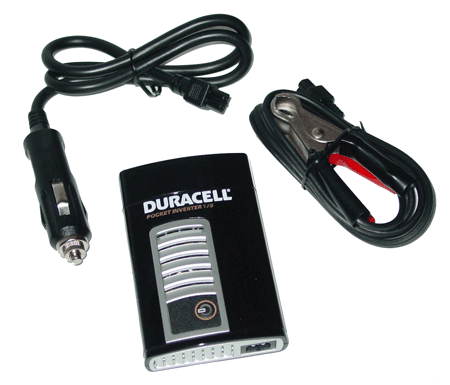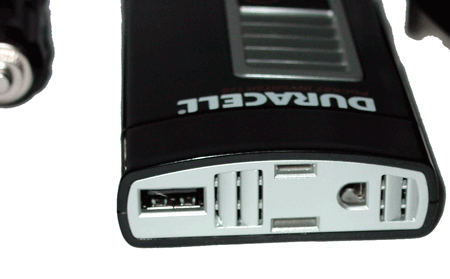Universal Laptop Power Adapters For The Air, Road, And Wall
Hitting The Highway Or Traveling By Air
If you are hitting the highway and you need a way to keep your notebook charged, a simple power inverter might be the cheapest way to go. And it's really the only alternative for those disinterested in paying for a travel adapter.
There are a handful of drawbacks to buying an inverter rather than a new adapter. Most cars come with a 90 A alternator, so there is plenty of power to output (amps * volts = watts). However, the alternator isn’t your main limitation. First, there's the fuse used to protect the circuit. Most automotive fuses limit the output on the cigarette lighter to 15 A. More constricting is the cigarette lighter receptacle itself, though.
The 12 VDC connection in almost every car's cigarette lighter is governed by standard J563 of the Society of Automotive Engineers. Not only does the standard specify dimensions, but it also caps maximum current at 8 A. Do the math, and that's 12 V * 8 A = a maximum of 96 W.
The figure assumes the cigarette lighter is on a dedicated circuit with a 15 A fuse. In the real-world, you're going to have less current because (at least in the handful of vehicles we were able to check) the cigarette lighter shares a circuit with the radio. Now, you shouldn’t run into any problems if you're powering a full-sized notebook. But if you wanted to wire up your desktop machine, you'd need a dedicated circuit with separate fuse.
No matter what, this isn't an ideal implementation, though. Your car already supplies a DC voltage. When you use a power inverter, you convert that to AC. From there, you plug in your original notebook’s power adapter to get back to DC. Simply using a travel adapter lets you go DC-to-DC, which is always going to be more efficient.
Most auto ignition systems have four positions: On, Start, Accessories, and Off. Start is spring loaded to start your engine, and Off is self-explanatory. Acc, or Accessories, turns on electrical subsystems that don't require the engine to run unnecessarily as a convenience, such as the radio and windshield wipers. On turns on all electrical subsystems necessary to start the engine.
If you use your notebook via an inverter while driving around town, you're in fairly good shape, aside from the previously-mentioned inefficiency and the unsafe distraction. Your battery gets charged by the alternator when the engine is running. Driving a notebook with an inverter with the ignition in the Acc or On positions is a far worse idea, though. You waste a lot of energy with the DC to AC to DC conversion, which puts a real load on your battery. Drain it too far and you'll damage the cells beyond the point of charging back up again. At that point, you may as well have spent the money on the travel adapter we recommended earlier on.
Get Tom's Hardware's best news and in-depth reviews, straight to your inbox.
Incidentally, this is also why you generally can't use inverters on airplanes. The EmPower outlet outputs 15 V DC at a maximum load of 75 W. As a result of that efficiency problem, you might find it difficult to get ample power from that connector.
Every conversion you add to the circuit results in a loss of power efficiency. So, travel adapters have a non-inverting DC-to-DC converter to get from 12 V / 15 V to the voltage of your laptop.
Current page: Hitting The Highway Or Traveling By Air
Prev Page Do You Need A New Adapter? Next Page Universal Power Adapters: How Do They Work?

